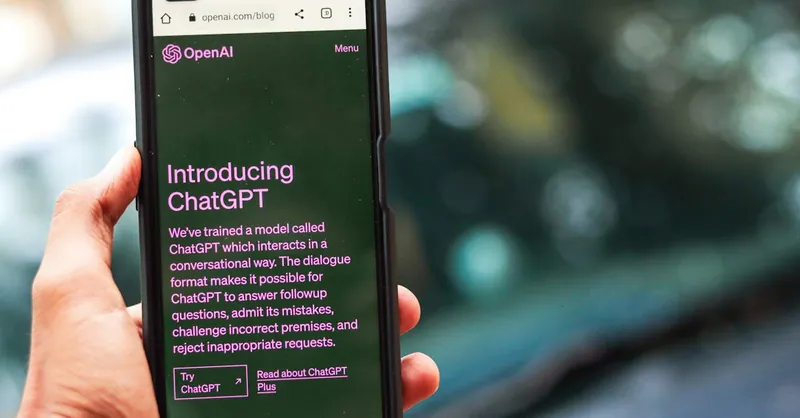Top AI Assistants for Task Management to Boost Productivity
Category: Productivity & Automation
Unlock Next-Level Productivity with AI Assistants for Task Management
If you're a professional, entrepreneur, or tech enthusiast hunting for the best AI assistants for task management, you know how overwhelming juggling tasks can get. With endless to-dos, deadlines, and priorities, finding the right AI tool that seamlessly automates and organizes your workflow is crucial—not just to save time but to truly elevate your productivity. You've probably scrolled through countless apps and reviews, wondering which AI assistant delivers real results without a steep learning curve or clunky integrations. This post cuts through the noise by diving deep into the top AI assistants designed specifically to streamline task management, highlighting their unique features, pros, cons, and ideal users. Unlike generic software roundups, this guide is laser-focused on AI-powered task management tools that can adapt to your needs—whether you're managing a small team, scaling a startup, or optimizing your personal workflow. By the end, you'll have a clear understanding of which AI assistant fits your style and goals, empowering you to automate smarter, focus better, and get more done.
- Unlock Next-Level Productivity with AI Assistants for Task Management
- Understanding AI Assistants for Task Management
- Key Features to Look for in AI Task Management Assistants
- Top AI Assistants Overview
- Comparing Pricing Models and Accessibility
- Use Case Scenarios: Leveraging AI Assistants Across Professions
- Integration with Other Productivity Tools and Workflows
- Benefits of Automation and AI-driven Insights in Task Management
- Potential Challenges and Considerations When Using AI Assistants for Task Management
- Tips for Choosing and Implementing the Right AI Assistant
- Future Trends in AI Task Management Assistants
Understanding AI Assistants for Task Management
AI assistants for task management are intelligent software tools designed to automate, organize, and optimize your to-do lists and workflows by leveraging advanced technologies like machine learning and automation. Unlike traditional task management apps that require manual input and static reminders, AI-powered assistants continuously learn from your behavior, preferences, and work patterns to provide personalized task prioritization, smart scheduling, and proactive reminders. This dynamic adaptability enables you to focus on high-impact work rather than administrative overhead.
How AI Enhances Task Organization and Prioritization
Through machine learning algorithms, AI assistants analyze various factors such as deadlines, task dependencies, historical completion times, and user habits to intelligently categorize and rank your tasks. This ensures that urgent and important items gain prominence, helping prevent missed deadlines and reducing the stress of mental overload. Furthermore, automation features like natural language processing (NLP) allow you to create tasks quickly via voice commands or conversational inputs, streamlining task entry and updates.
Traditional vs. AI-Powered Task Managers
| Feature | Traditional Task Managers | AI-Powered Task Assistants |
|---|---|---|
| Task Entry | Manual input; often rigid forms | Natural language and voice commands |
| Task Prioritization | User-driven, static lists | Dynamic, data-driven prioritization via AI |
| Reminders | Fixed or time-based notifications | Context-aware and predictive reminders |
| Adaptability | Limited customization and intelligence | Learns user behavior to optimize workflows |
| Integration Capabilities | Basic third-party integrations | Seamless cross-platform automation workflows |
By understanding these core differences, it's clear that AI assistants offer a smarter, more proactive approach to task management—freeing your mind and calendar from mundane details, all while adapting to your unique productivity style over time. Incorporating these AI insights into your daily workflow can transform how you organize work, making task management less of a chore and more of a strategic advantage.

Image courtesy of Kindel Media
Key Features to Look for in AI Task Management Assistants
When choosing the best AI assistant for task management, it’s essential to focus on critical functionalities that directly impact your productivity and ease of use. The most effective AI tools combine advanced natural language processing (NLP) with smart automation to turn your casual inputs—whether typed or spoken—into actionable tasks without friction. This means you can quickly add, modify, or reorder tasks simply by chatting with your assistant in everyday language.
Beyond task creation, smart scheduling capabilities are a game-changer. Top AI assistants analyze your calendar, deadlines, and work habits to propose optimal time slots for task execution, preventing overload and helping maintain balanced workflows. Equally important are robust integration capabilities that seamlessly sync with popular calendars (Google Calendar, Outlook), communication tools (Slack, Microsoft Teams), and project management platforms to ensure your entire ecosystem stays connected and up-to-date without manual effort.
Moreover, leading AI task managers offer predictive task suggestions, leveraging machine learning to identify recurring tasks or upcoming deadlines you might overlook, nudging you to stay ahead of your workload. Finally, personalization matters: the AI must learn and adapt to your unique productivity style, preferences, and priorities, tailoring task recommendations and reminders so every alert feels relevant—not intrusive. By prioritizing these core features—NLP, smart scheduling, integration, predictive insights, and personalization—you’ll empower your AI assistant to function as a truly intelligent task partner rather than just another app on your device.

Image courtesy of ANTONI SHKRABA production
Top AI Assistants Overview
Navigating the landscape of AI-powered task management assistants can be daunting, but several stand out due to their robust features, seamless integrations, and intelligent automation. Here’s a curated overview of the best AI assistants designed to transform your productivity by simplifying task organization, prioritization, and execution.
1. Microsoft Cortana
Microsoft Cortana leverages deep integration with the Microsoft 365 ecosystem, making it a powerful AI assistant for professionals entrenched in Microsoft tools. It offers natural language task creation, proactive reminders, and smart calendar management by analyzing your emails and meetings. Cortana’s standout capability is its ability to automatically surface relevant tasks from communications and documents, ensuring nothing falls through the cracks. Its seamless syncing with Outlook and Teams makes it ideal for enterprise users seeking an AI assistant embedded within their existing workflow.
2. Google Assistant
Known primarily for consumer use, Google Assistant excels at quick task handling through voice commands and natural language processing. Its strength lies in cross-platform compatibility and integration with Google Workspace apps like Calendar, Keep, and Tasks. Google Assistant can generate reminders, schedule tasks, and send follow-up notifications instantly, helping users stay organized on the go. Additionally, its AI capabilities allow for context-aware suggestions, making it an excellent choice for individuals who prefer voice-enabled task management and broad device compatibility.
3. Trello with AI Plugins
Trello’s visual task boards get a productivity boost with AI-powered plugins such as Butler. These AI enhancements enable automated workflows, smart task sorting, and deadline predictions based on your board activity. Trello’s flexibility combined with AI automation suits teams that thrive on collaborative project management and want to minimize manual task updates. Butler’s rule-based triggers and natural language command features empower users to create custom automations that keep projects moving efficiently without constant oversight.
4. Todoist Smart Schedule
Todoist, a popular task management app, integrates AI in its Smart Schedule feature to offer dynamic task prioritization and personalized scheduling. Using machine learning, Todoist analyzes your task list, deadlines, and typical productivity patterns to suggest optimal dates for each item, reducing procrastination and workload spikes. This AI capability transforms a simple to-do list into a smart productivity assistant that adapts to your daily rhythms, ideal for both individual users and small teams seeking an intelligent, easy-to-use planner.
5. Notion AI
Notion AI enhances the all-in-one workspace with powerful AI-driven features that assist in task creation, note summarization, and workflow automation. By combining database capabilities with AI, Notion transforms raw text inputs into structured tasks with deadlines, priorities, and dependencies. Its standout feature is the ability to generate content and automate repetitive task management actions within a highly customizable environment, appealing to knowledge workers and teams who want a flexible yet smart solution for managing complex projects.
Each of these AI assistants brings unique strengths that cater to different productivity styles and professional contexts—whether you prioritize voice command efficiency, integration with established ecosystems, or advanced workflow automation. Choosing the right tool can dramatically optimize how you manage tasks, helping you save time, reduce stress, and unlock peak productivity powered by AI.

Image courtesy of Matheus Bertelli
Comparing Pricing Models and Accessibility
When selecting the best AI assistant for task management, understanding pricing models and platform accessibility is crucial to ensure you get the right balance of features at a price point that fits your budget and use case. Most AI assistants offer a freemium approach—allowing you to experience basic functionalities before committing to premium subscriptions that unlock advanced AI-powered features, integrations, and expanded user limits. Below is a breakdown of typical pricing tiers and accessibility aspects to consider:
Free vs Premium Features
-
Free Plans:
These often include core task management capabilities such as basic task creation, reminders, and limited integrations. Free tiers are ideal for individuals or small teams experimenting with AI task automation without upfront costs. However, AI-driven personalization, smart scheduling, and automation rules may be restricted or come with quotas. -
Premium Subscriptions:
Paid plans commonly unlock advanced AI features like smart prioritization, predictive task suggestions, and deeper workflow automations. Premium tiers typically provide higher storage capacity, unlimited collaborators, priority support, and enhanced security features—important for professional teams and enterprises requiring scalable solutions.
| Feature | Free Tier | Premium Tier |
|---|---|---|
| AI-Powered Prioritization | Limited or basic | Full access to advanced ML algorithms |
| Smart Scheduling | Minimal | Dynamic scheduling with calendar sync |
| Team Collaboration | Limited to small groups | Supports large teams, role management |
| Automation & Workflow Rules | Often restricted | Extensive custom automation capabilities |
| Integrations | Basic (e.g., Google Calendar) | Wide range including enterprise systems |
Subscription Costs and Value
Subscription fees vary widely depending on the complexity and scope of the AI assistant’s features, usually ranging from $5 to $30+ per user per month for personal and small business plans. Enterprise pricing is often customized based on user count, security needs, and integration requirements. It’s essential to assess whether the incremental productivity gains from premium AI capabilities justify the cost based on your workload and team size.
Platform Compatibility and Suitability
A versatile AI assistant should operate seamlessly across multiple platforms to fit your workflow anytime, anywhere:
-
Web-Based Access:
Most AI assistants come with fully featured web interfaces accessible via browsers, ensuring you can manage tasks from any device without software installations. -
Mobile Apps (iOS and Android):
Native mobile applications with AI-powered voice commands and notifications are vital for on-the-go productivity, especially for users relying on smartphones and tablets. -
Desktop Clients:
Dedicated desktop apps (Windows, macOS) enhance functionality with offline access and deep system integrations, favored by power users and professionals.
Tailored for Individuals, Teams, or Enterprises?
-
Individuals and Solopreneurs:
Often benefit from lightweight AI assistants focused on personal productivity, affordable pricing tiers, and intuitive UX without complex collaboration features. -
Small to Medium Teams:
Require AI tools offering collaboration, shared task boards, role-based access, and automation to coordinate efforts efficiently without ballooning costs. -
Enterprises:
Demand robust AI assistants integrated into corporate ecosystems, with advanced security, compliance controls, unlimited scalability, and dedicated customer success support.
By carefully evaluating pricing models, feature sets, platform compatibility, and user capacity, you can select an AI task management assistant tailored perfectly to your productivity goals—whether managing your personal to-do list, coordinating team projects, or orchestrating complex enterprise workflows. This strategic choice ensures your AI assistant not only boosts productivity but also fits comfortably within your budget and technological environment.

Image courtesy of Ivan Samkov
Use Case Scenarios: Leveraging AI Assistants Across Professions
AI assistants for task management are not one-size-fits-all; their true power shines when tailored to specific professional needs. Whether you're an entrepreneur, freelancer, or project manager, these AI tools can dramatically reduce manual planning, delegate effectively, and enhance accountability—key pillars for boosting productivity.
Entrepreneurs: Streamlining Decision-Making and Delegation
Entrepreneurs juggling multiple roles benefit immensely from AI assistants that automate scheduling, prioritize high-impact tasks, and track delegated assignments. By integrating with calendars, emails, and communication platforms, AI assistants can:
- Extract actionable tasks from meetings and messages automatically
- Propose optimal timelines based on workload and deadlines
- Monitor delegated tasks with real-time progress updates and reminders
This allows entrepreneurs to focus on strategic growth instead of the minutiae of task follow-ups and manual planning, making their workflow more agile and responsive.
Freelancers: Enhancing Focus and Time Management
Freelancers often face the challenge of managing diverse projects with tight deadlines. AI assistants empower freelancers by offering:
- Customized task prioritization aligned with client deadlines and payment schedules
- Smart scheduling that suggests optimal work blocks by analyzing productivity patterns
- Automated reminders that prevent missed deliverables or overlapping commitments
With AI taking care of these time-consuming details, freelancers can maintain sharper focus, reduce burnout, and deliver quality work consistently.
Project Managers: Improving Team Accountability and Workflow Transparency
For project managers, AI assistants serve as collaborative enablers that streamline task delegation, monitor dependencies, and ensure team accountability. Key benefits include:
- Automated task assignment based on team members’ workloads and expertise
- Dynamic timeline adjustments responding to shifting project scopes
- Predictive alerts for potential bottlenecks or overdue tasks
By leveraging AI’s proactive capabilities, project managers can maintain clear visibility into project progress and drive cross-functional teams toward timely, aligned execution without micromanagement.
Across these use cases, AI-powered task management assistants act as intelligent partners—minimizing manual overhead, facilitating seamless delegation, and increasing accountability in ways that traditional tools cannot match. Adopting the right AI assistant tailored to your professional context not only saves time but fundamentally transforms how you organize, execute, and excel at your work.

Image courtesy of olia danilevich
Integration with Other Productivity Tools and Workflows
A truly effective AI assistant for task management must excel in integration with your existing productivity ecosystem—connecting seamlessly with email, project management platforms, calendars, and communication apps to create a unified, frictionless workflow. This cross-platform connectivity is essential because it eliminates redundant manual data entry, keeps all your tools synchronized in real-time, and allows AI capabilities to leverage contextual information from multiple sources.
Why Integration Matters for Seamless Workflow Automation
Integrations empower AI assistants to automatically extract tasks, deadlines, and priorities from your emails, messages, and meetings, reducing cognitive load and enabling proactive task management. For example:
- Email Integration: AI assistants can scan your inbox for actionable items like meeting invites, deadlines, or follow-ups, automatically turning them into tasks or calendar events without you lifting a finger.
- Calendar Syncing: By syncing with Google Calendar, Outlook, or Apple Calendar, AI assistants intelligently schedule tasks based on your availability, deadlines, and existing commitments, optimizing your daily workload.
- Project Management Platforms: Tools like Trello, Asana, or Monday.com combined with AI automations facilitate dynamic task updates, priority shifts, and deadline adjustments based on project progress and team inputs.
- Communication Apps: Integration with Slack, Microsoft Teams, or other messaging platforms allows AI assistants to capture and assign tasks from chat conversations, ensuring that important action points don’t get lost.
This level of integration creates a truly connected productivity environment where data flows effortlessly across platforms, enabling AI assistants to deliver predictive insights and smart scheduling based on a holistic understanding of your work patterns. Rather than working in isolated silos, your AI assistant becomes the central intelligence hub that orchestrates everything—saving time, reducing errors, and preventing missed deadlines.
Key Integration Benefits
- Automated task capture from emails and conversations reduces manual entry and missed tasks.
- Unified calendars and scheduling provide real-time visibility into your commitments and optimal task timing.
- Dynamic workflow updates across project management tools keep teams aligned without duplicated effort.
- Context-aware reminders and suggestions based on combined data sources enhance prioritization and follow-ups.
When evaluating AI assistants, prioritize those with robust, native integrations and flexible API connections—this ensures your AI tool adapts to your unique technology stack and scales with your productivity needs. Ultimately, deep integration is the backbone of automation that turns your AI assistant into a high-impact productivity partner rather than just another isolated app.

Image courtesy of Ivan Samkov
Benefits of Automation and AI-driven Insights in Task Management
Incorporating automation and AI-driven insights into task management transforms not only how tasks are executed but also how you understand and optimize your workload. AI assistants excel at automating repetitive, time-consuming tasks such as data entry, scheduling, and follow-up reminders, which frees you to focus on more strategic, high-impact activities. This automation reduces human error and ensures consistency, helping maintain smooth workflows without daily micromanagement.
Beyond automation, AI brings powerful insights and analytics that redefine productivity at a deeper level. By analyzing historical task completion data, current workloads, and project timelines, AI can provide workload forecasting to predict busy periods and suggest proactive adjustments to prevent burnout. Additionally, AI identifies bottlenecks by monitoring task flow and pinpointing delays or resource shortages that hinder progress. These insights enable you to intervene early, reallocating resources or adjusting priorities to keep projects on track.
Furthermore, AI-powered productivity analytics offer customized reports detailing task completion rates, time spent on activities, and overall efficiency trends. These data-driven perspectives empower individuals and teams to continuously optimize their work habits and processes. With AI automation streamlining operations and AI-driven insights enhancing decision-making, task management evolves from a reactive chore into a smart, strategic advantage—driving sustained productivity gains and more effective time management.

Image courtesy of Photo By: Kaboompics.com
Potential Challenges and Considerations When Using AI Assistants for Task Management
While AI assistants offer transformative productivity benefits, it’s equally important to be aware of potential challenges and key considerations to ensure these tools genuinely enhance your workflow without unintended drawbacks.
Data Privacy and Security Concerns
AI assistants often require access to sensitive data such as emails, calendars, messages, and project files to deliver personalized task recommendations and automation. This raises data privacy and security concerns, especially for businesses handling confidential information. Before adopting any AI assistant, verify that the provider employs robust encryption, complies with industry standards like GDPR or HIPAA where applicable, and clearly communicates their data handling policies. Being cautious about permissions and choosing solutions with transparent privacy protocols helps mitigate risks related to information leaks or unauthorized access.
Avoiding Over-Reliance on AI
Relying too heavily on AI assistants can sometimes lead to over-dependence, where critical thinking and manual oversight diminish. AI is designed to assist, not replace, human judgment—especially because AI may misinterpret ambiguous inputs or fail to grasp complex, nuanced contexts. Maintaining a balanced approach ensures that you use AI as an effective productivity enhancer rather than a crutch, supplementing it with your expertise for decision-making and priority evaluation.
Learning Curve and Adoption Challenges
Integrating AI-powered task managers into your routine often involves a learning curve, especially if the tool offers advanced features like natural language processing, workflow automation, or multi-platform integrations. Users may initially face challenges adapting to new interfaces, understanding AI-driven suggestions, or configuring automation rules properly. Investing time in onboarding and training, exploring tutorials, and starting with simple use cases can help ease adoption and unlock the full potential of AI assistants swiftly.
Limitations in Understanding Complex Contexts
Although AI assistants have advanced considerably, they may still struggle with comprehending complex contexts or ambiguous instructions. For instance, AI might misprioritize tasks if it cannot fully grasp project dependencies, shifting business goals, or subtle nuances conveyed in human language. These limitations underscore the importance of regularly reviewing AI-generated task lists, validating priorities, and supplementing AI insights with human oversight to maintain accuracy and relevance.
By carefully considering these challenges—data privacy, over-reliance risks, learning curves, and contextual limitations—you can implement AI task management assistants more effectively. This balanced awareness ensures that your AI tool acts as a powerful, reliable partner that genuinely boosts productivity while safeguarding your workflow and data integrity.

Image courtesy of cottonbro studio
Tips for Choosing and Implementing the Right AI Assistant
Selecting the optimal AI assistant for task management requires a strategic approach that aligns with your unique productivity needs, team dynamics, and existing workflows. Start by conducting a thorough needs assessment: identify your primary pain points—whether it's task prioritization, deadline tracking, collaboration, or automation—and the key features that would deliver the most impact. Consider factors such as the scale of your operation (individual, team, or enterprise), preferred platforms, and integration requirements with tools already in use.
Before full adoption, it’s wise to pilot multiple AI assistants in real-world scenarios. Running short test phases allows you to evaluate usability, AI accuracy in task suggestions, and how well each tool adapts to your working style. During this phase, involve your team to gather diverse feedback on the learning curve, responsiveness, and collaborative capabilities. This hands-on evaluation reduces costly mistakes and ensures smoother adoption.
Best Practices for Implementation and Continuous Optimization
-
Invest in Training and Onboarding
Provide comprehensive training for all users to maximize comfort with the AI assistant’s features—especially advanced capabilities like natural language input and automation workflows. Tailored onboarding sessions and easy-access support materials accelerate user confidence and productivity. -
Integrate AI Assistants Seamlessly into Existing Workflows
Avoid disruption by gradually incorporating the AI assistant into daily routines. Automate task capture from emails, calendar events, and communication channels to minimize manual input, while keeping critical checkpoints for human validation. This hybrid approach balances automation with oversight. -
Establish Clear Usage Policies and Roles
Define how teams will interact with the AI assistant to maintain consistency. Assign roles for managing AI-generated tasks, adjusting priorities, and reviewing AI insights to ensure balanced collaboration between human decision-making and AI automation. -
Monitor Performance and Gather Feedback Continuously
Regularly analyze usage data and productivity metrics provided by your AI assistant. Solicit user feedback to identify pain points or feature gaps. Use this information to refine configurations, update automation rules, and explore new integrations that enhance task management efficiency. -
Stay Updated with AI Improvements and Features
AI assistants evolve rapidly; staying informed about updates ensures you leverage new capabilities that improve task prediction accuracy, expand integration options, or enhance security. Periodic reassessments allow your assistant to scale alongside your growing productivity needs.
By applying these strategic tips for choosing and implementing AI assistants, you create a sustainable, optimized task management environment. This approach not only smooths the transition to AI-driven workflows but also unlocks long-term productivity gains by continuously fine-tuning the synergy between human effort and AI intelligence.

Image courtesy of olia danilevich
Future Trends in AI Task Management Assistants
As AI technology continues to advance at a rapid pace, the future of task management assistants promises revolutionary improvements that will redefine how we organize and execute work. Emerging technologies such as conversational AI, predictive analytics, and integration with virtual and augmented reality (VR/AR) are set to transform task management from static to deeply immersive and proactive experiences.
Conversational AI: More Natural, Context-Aware Interactions
Next-generation AI assistants will leverage sophisticated conversational AI driven by advanced natural language understanding (NLU) and context awareness. This evolution will allow users to interact with their task managers through fluid, human-like dialogues—either via voice or chat—enabling complex task creation, delegation, and reprioritization without navigating menus or interrupting workflow. Such assistants will understand nuanced instructions, detect intent over multiple sessions, and proactively suggest adjustments based on ongoing conversations and contextual cues. This conversational shift will deliver seamless, hands-free productivity and dramatically reduce friction in managing tasks.
Predictive Analytics: Anticipating Your Workload Before It Happens
By harnessing predictive analytics, AI assistants will go beyond reacting to your inputs to anticipating future work patterns and challenges. Machine learning models will analyze historical task data, calendar events, team behaviors, and even external factors like market trends or client demands to forecast bottlenecks, recommend task batching, and optimize scheduling well in advance. This foresight will enable smarter workload balancing, deadline risk mitigation, and personalized productivity coaching. Predictive insights will increasingly become a standard feature, turning AI assistants into strategic advisors that help you stay ahead of deadlines and work surges.
Integration with Virtual and Augmented Reality: Immersive Task Management
Looking further ahead, integration of AI task assistants with virtual reality (VR) and augmented reality (AR) environments promises a more immersive and spatial approach to productivity. Imagine managing your project boards, schedules, and communications within a 3D workspace where tasks can be visually organized, prioritized, and linked in multidimensional ways. AR overlays could provide contextual reminders and live collaboration cues directly within your physical environment, blending digital task management with real-world action seamlessly. This spatial computing frontier will offer novel ways to visualize complex workflows, enhance team collaboration remotely, and reduce cognitive overload by mapping tasks into intuitive visual contexts.
By embracing these future trends—conversational AI for intuitive interaction, predictive analytics for proactive task management, and VR/AR integration for immersive experiences—AI task assistants will evolve into indispensable productivity partners. Staying informed and adapting early to these technologies will give individuals and organizations a significant edge in managing increasingly complex and dynamic work environments.

Image courtesy of Sanket Mishra
